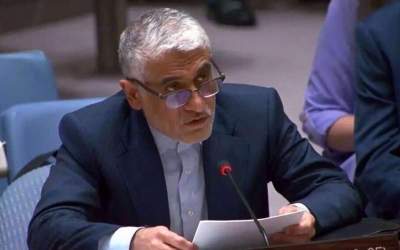Head of Iran�s Fisheries Organization Nabiollah Khanmirzayee said on Monday that Iran was currently third in the world in sturgeon farming and processing, adding that production of shrimp in aqua farms South and North of the country was on rise despite diseases that had affected output in the previous years.
He added the annual fisheries and aquaculture production in the country would exceed a target of 1.250 million tons (1.37 million American tons) until March 2020, when the current Iranian calendar year ends.
Khanmirzayee said annual output stood at 1.1 million tons in the year ending in March 2019, saying the figure was above a target defined in a five-year national economic plan that started in 2016.
The official said a boom for fisheries industries in Iran was mainly a result of increased demand for seafood in the country.
He said average consumption of sea food items reached 12.1 kilograms per person last year, up more than 50 percent compared to several years before.
Speaking in an international fisheries and aquaculture exhibition on Tehran, Khanmirzayee said it had become a policy of the Iranian government to encourage consumption of seafood and white meat to reduce an annual import of 150,000 tons of red meat into the country.
He said Iran had made a good progress in trout farming, saying the country was currently the number one producer of rainbow trout in the world.
Khanmirzayee said production of caviar and shrimp had also experienced a boom over the past years.
Late in June, Iranian Minister of Agriculture Mahmoud Hojjati announced that his country, in a 7-year span of time, has increased its aquaculture shrimp production by 400%, in a bid to further tap into the country�s long coasts and maritime potentials for bolstering national non-oil exports.
Hojjati said on June 27 that shrimp production in the country had increased to 50,000 tons in early 2019, up more than four times compared to the 12,000 tons produced in 2013, which meant a four-fold increase.
Inaugurating a large shrimp farm in the southern Iranian province of Hormuzgan, Hojjati said the increase in government investment in shrimp farming was like never before.
�This year there will be some 1,800 hectares of expansion in shrimp farming,� said the minister, adding that entrepreneurs and investors were entering the field at an unprecedented pace.
According to government estimates, Iran exported some 22,000 tons of shrimps, worth of around $150 million, in the last Iranian calendar year which ended in March 2018.
Hojjati said Iran was searching for new markets in the Persian Gulf region for its aquaculture farmed shrimp while plans were in place to further expand farming in areas along the southern coasts where unemployment is rife.
He said Iran had effectively overcome its old problems in shrimp farming including the viral diseases that affected production, saying the country had now an established supply chain which allowed for more rapid expansion in the sector.
Iran aims to meet a target of 60,000 tons of shrimp production by 2021. While expanding the farms in southern regions like the relatively poor province of Sistan and Baluchistan, authorities have also encouraged shrimp farming along the coast of the Caspian Sea in the province of Golestan over the past years.
In a bid to further expand the sector, Iran has launched joint schemes with countries like France for cultivation and export of the protein-rich food item.
Iran�s Northern province of Golestan is one of the main hubs for producing and breeding aquatic animals and seafood, especially shrimp, in the country. The green province enjoys high capacity in shrimp farming. About 80% of the shrimp produced in Golestan is exported to foreign countries.
Seafood constitutes close to 10% of the average value of Iran�s annual agricultural exports. Over $80 million worth of seafood products were exported from the country in the first half of the current year (March 21- Sep. 21), showing a 20% growth in terms of value compared to the similar period of last year.
# Tags










